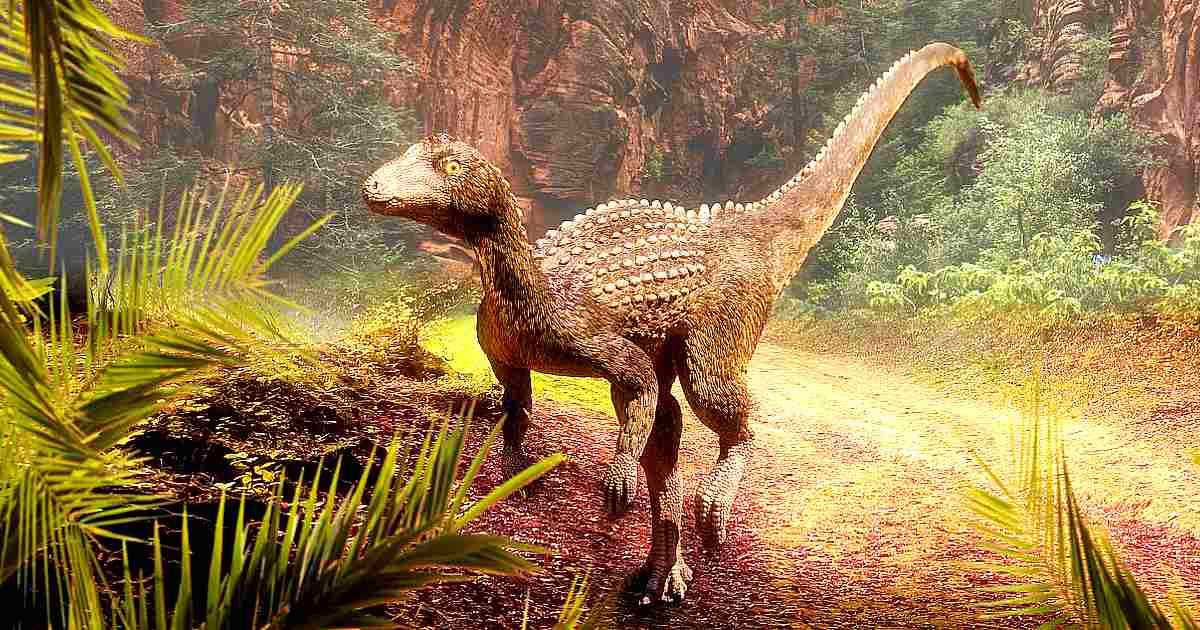In a new study published on February 15 in Scientific Reports, researchers introduce a new theory that could explain the origin and journey of Chicxulub.
When it crashed into Earth about 66 million years ago, the Chicxulub impactor, as it’s known, left behind a crater off the coast of Mexico that’s 93 miles wide and 12 miles deep.
Its devastating impact brought the reign of the dinosaurs to an abrupt and calamitous end by triggering their sudden end, along with the end of almost three-quarters of the plant and animal species that were living on Earth at the time.
The enduring puzzle has always been where the asteroid or comet that set off the destruction originated, and how it came to strike the Earth.
Jupiter as a pinball machine, deflecting the “sun grazers”
Using statistical analysis and gravitational simulations, the researchers show that a significant fraction of a type of comet originating from the Oort cloud – a sphere of debris at the edge of the solar system- was bumped off-course by Jupiter’s gravitational field during its orbit.
These comets were then sent close to the sun, whose tidal force broke apart pieces of the rock. These fragments cross the Earth’s orbit and hit the planet once every 250 to 730 million years or so.
“Basically, Jupiter acts as a kind of pinball machine,” said co-author Amir Siraj. “Jupiter kicks these incoming long-period comets into orbits that bring them very close to the sun.”
It’s because of this that long-period comets, which take more than 200 years to orbit the sun, are called sun grazers, he said.
“When you have these sun grazers, it’s not so much the melting that goes on, which is a pretty small fraction relative to the total mass, but the comet is so close to the sun that the part that’s closer to the sun feels a stronger gravitational pull than the part that is farther from the sun, causing a tidal force,” he said.
“You get what’s called a tidal disruption event,” he said. “These large comets that come really close to the sun break up into smaller comets. And basically, on their way out, there’s a statistical chance that these smaller comets hit the Earth.”
An greatly increased likelihood of long-terms comets impacting the Earth
The researchers’ calculations show that this theory makes the chances of long-period comets impacting Earth more likely by a factor of about 10. The calculations also show that about 20% of long-period comets become sun grazers. That finding falls in line with research from other astronomers.
The researchers claim that their new rate of impact is consistent with the age of Chicxulub, providing a satisfactory explanation for its origin and other impactors like it.
“Our paper provides a basis for explaining the occurrence of this event,” said co-author Avi Loeb.
“We are suggesting that, in fact, if you break up an object as it comes close to the sun, it could give rise to the appropriate event rate and also the kind of impact that killed the dinosaurs.”
What was Chicxulub made of?
Their hypothesis might also explain the makeup of many of these impactors.
“Our hypothesis predicts that other Chicxulub-size craters on Earth are more likely to correspond to an impactor with a primitive (carbonaceous chondrite) composition than expected from the conventional main-belt asteroids,” the researchers write in the paper.
This is important, because a currently popular theory on the origin of Chicxulub claims the impactor is a fragment of a much larger asteroid that came from the main belt, which is an asteroid population between the orbit of Jupiter and Mars.
Only about a tenth of all main-belt asteroids have a composition of carbonaceous chondrite, while it’s assumed most long-period comets have it. Evidence found at the Chicxulub crater and other similar craters suggests that they had carbonaceous chondrite.
This includes an object that hit about 2 billion years ago, creating the Vredefort crater in South Africa, which is the largest confirmed crater in Earth’s history. It also includes an impactor that left the Zhamanshin crater in Kazakhstan, which is the largest confirmed crater within the past million years.
An Earth strike once every 250,000 to 730,000 years
The researchers say that composition evidence supports their model, and that the years the objects hit support both their calculations on impact rates of Chicxulub-sized tidally disrupted comets and for smaller ones like the impactor that made the Zhamanshin crater. If produced the same way, they say those would strike Earth once every 250,000 to 730,000 years.
Loeb and Siraj say their hypothesis can be tested by further studying these craters, others like them, and even ones on the surface of the moon to determine the composition of the impactors. Space missions sampling comets can also help.
“We should see smaller fragments coming to Earth more frequently from the Oort cloud,” Loeb said. “I hope that we can test the theory by having more data on long-period comets, get better statistics, and perhaps see evidence for some fragments.”
Loeb said understanding this is not just crucial to solving a mystery of Earth’s history, but could prove pivotal if such an event were to threaten the planet again.
“It must have been an amazing sight, but we don’t want to see that side,” he said.
More science and psychology news:
- It was not overhunting, but climate change that led to the end of huge North American animals like mammoths, a new study suggests.
- 3D printing innovation: a new technique makes it possible to “feed” inanimate objects with living matter like spinach, making them stronger.
Study: “Breakup of a long-period comet as the origin of the dinosaur extinction”
Authors: Amir Siraj and Abraham Loeb
Published in: Scientific Reports
Publication date: February 15, 2021
DOI: https://doi.org/10.1038/s41598-021-82320-2
Photo: by enriquelopezgarre from Pixabay

